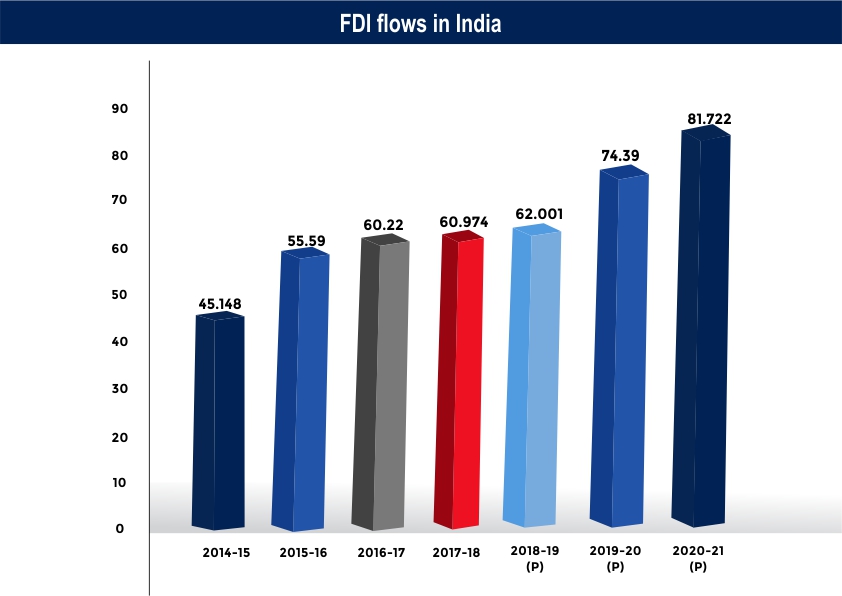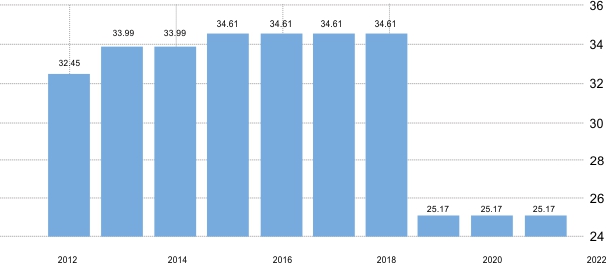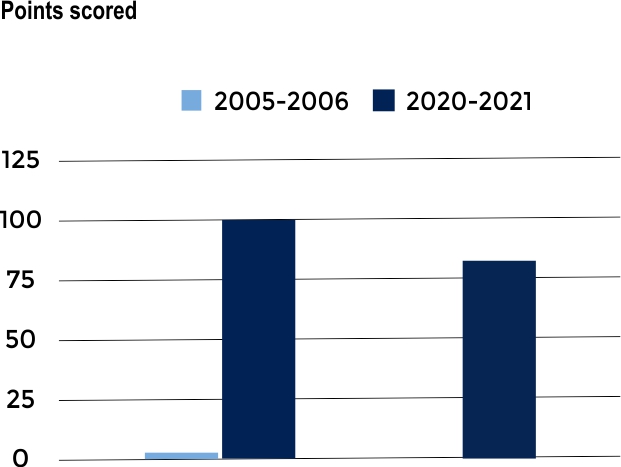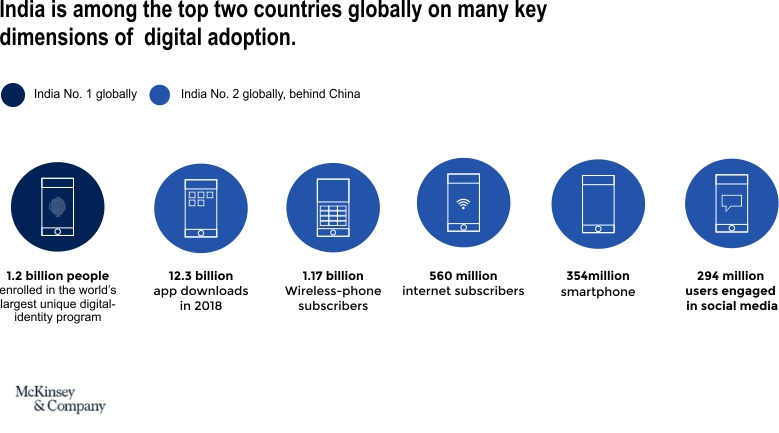
Content Creator
A country coined as the “land of snake-charmers” was never deterred from being confident about the vast treasure of opportunities, skills, and knowledge-bank. The sub-continent with the highest number of multilingual nationals and the second-highest labour force is on its way to becoming the “Manufacturing hub” of the world. India capitalised on the opportunities arising from trials and upheavals globally in a good stride. Radical digitization, reforms in taxation, growth-friendly schemes, everything is propelling the beautiful journey, and there seems to be no looking back. The business-friendly policies have levelled the ground and set the inertia of motion for better things. This report highlights “The New India” and covers changing landscapes, growth drivers, tech innovations, and challenges faced by investors across sectors.
A civilization that dates back to 9000 years and has a wide ambit of offerings. The varying demography of the country shows the richness of its heritage which drives the economy to a large extent. A country with more than fifty festivals and 21 public holidays emphasises a lot on its rich heritage. Marketing in this subcontinent is challenging as well as alluring.
Yes, New India is unfurling with many new changes, which foreign investors find irresistible. Read on to know how the country uses every adversity as an opportunity and builds a base of consistency, endurance, commitment, and excellence.
The Indian business landscape has evolved radically over the past few years.
Several government initiatives undertaken to facilitate incorporations and subsidiaries are luring many MNCs toward India.
Affordable labour, SEZ zones for duty-free exports, good consumption owing to the high population, a stable government, liberalisation of the FDI policy, incentives & subsidies offered by the Indian Government & reduced tax rates and digitization are some of the advantages of India.
Which other subcontinent gives so much scope for a competitive market? None, inadvertently.
According to the Department for Promotion of Industry and Internal Trade (DPIIT), foreign direct investment (FDI) equity inflows to India reached US$ 72.12 billion in 2020-21 (until January 2021) while the cumulative FDI equity inflows to the country from April 2000 to January 2021 reached US$ 545.0 billion.
This year India has received a record high FDI inflow of $83.57 billion. The top 3 sectors attracting Foreign investment are Computer software and hardware, the Services industry, and automobiles.
This FDI inflow helped India climb the Ease of Doing Business (EoDB) to Rank 63 globally. This improvement is a great reassurance for developing countries.
India expects to attract FDI worth US$ 120-160 billion per year by 2025, according to a CII and EY report.
There has been a stark contrast in the way things have shaped up. We can ascribe this positive transformation to the changes in policies and limits that were in place earlier.
Let us see the changes in the landscape and how they contribute to India’s growth.
As we can see, there has been a steady influx in FDI since 2014. The annual FDI for 2021-2022 has been a record high of $83.57 billion.

The below table shows the FDI cap over the years in various sectors. As we can see, the increase in FDI limits is encouraging foreign entities to invest more in these sectors. This influx has spawned the exchange of knowledge and expertise, better ties, and ample employment opportunities.
| Year | 2009 | 2022 |
| Mining, oil and gas | 100 | 100 |
| Tele-communications | 74 | 100 |
| Insurance | 26 | 74 |
| Transportation | 59.6 | 100 |
| Media | 63 | 26 |
| Construction, Tourism & retail | 83.7 | 100 |
| Defence | 26 | 74 |
The below is the data for Corporate Tax for Manufacturing companies over ten years. We can see a slash in the Corporate Tax to 25.17%. For new manufacturing companies, the Corporate tax rate is slashed to 17.16%.

By lowering Corporate tax and widening the tax net, foreign investors would be encouraged to manufacture in India, thereby increasing revenue. The current Corporate tax rate is the lowest in the South Asian region and SouthEast Asia.
More than 40% of approved SEZs would soon become operational. This move would boost exports, development, and employment across the country.

Apart from the technical aspects catapulting India to a pedestal, the country also capitalised on the recent bio-geo-political upheavals. Additionally, some pivotal administrative moves have accelerated this transformation.
Revolutionary digitization in India started with the concept of Digital India in 2015. One motive of this scheme was to improve the digital infrastructure in India to help every individual to be virtually connected. From Free data recharges to a strong sweep of 4G networks (now 5G), India has come a long way. The other motive was Governance & Services on Demand.
Business opportunities in India have increased by leaps and bounds with the introduction of payment gateways at their fingertips. The single window system for a business in India entails online submission of applications and payment of application fees. This concept would not have been possible without an effective digitization process. Adopting a computerized central random inspection system helped to mitigate delays caused due to mandates like renewals of certificates/ approvals/ licenses. 19 Central government ministries/departments and ten states have already adopted this method.

The tax system before GST was complicated and multi-layered. The implementation of GST on 1st July 2017 was a breakthrough in indirect taxation norms. Some of the positive implications of GST are:
Over the last few years, the massive geo-bio-political disruptions resulted in a critical takeaway for countries to become supply chain resilient. The world’s “number one factory”, China, was dethroned from its position, and India is said to be the next probable supply chain leader. The recent and rippling effect of the Russian-Ukrainian war, also forced countries to implement self-imposed bans on oil, gas, and gold imports from Russia. This disruption caused a focus shift to India. With the ‘Make in India” industry, companies are encouraged to manufacture in India.
The above factors have propelled FDI inflows in India thereby amplifying opportunities phenomenally.
A milestone for holistic development: PM Gati Shakti Scheme
Another milestone for India is the launch of the PM Gati Shakti on 13th October 2021. With this massive 100 lakh crore project, the PM announced that Indian manufacturing and exports expect to grow by leaps and bounds. This scheme would enhance the global profile of local manufacturers so that they can compete with their global competitors. It would also generate ample employment opportunities for the youth.
The PM Gati Shakti would provide multimodal connectivity infrastructure across various economic zones using the seven engines listed below:
The technical expertise of Bhaskaracharya National Institute for Space Applications and Geoinformatics made this scheme possible. This scheme consists of a Digital Master Planning Tool on a dynamic Geographic Information System (GIS) platform. The system tracks real-time data of infrastructure projects undertaken by sixteen ministries and departments of India. The tracking entails capturing satellite imagery available from ISRO and base maps from Survey of India. This system would enable substantial transparency in the planning, designing, and development of all ministries with a unified vision. The vision is nothing less than Making India the leading seat of multi-faceted growth and opportunities.
Over the last few years, India has strengthened its ties with EU countries to enable trade and cultural exchanges seamlessly and on a larger scale. Recent global level meet-ups are positive propelling forces that facilitate these ties.
India-EU strategic ties have further strengthened this year after both the countries resumed the Free Trade Agreement after a hiatus of 9 years. India and the European Union feel the unprecedented urgency to resume business talks. The current geopolitical tensions in the world have forced them to reinforce a sound Trade relationship and these renewed ties are favourable for both countries.
The expected impact of this deal is to double the trade between India and the EU in the next five years. Both the countries, being two large democracies, are committed to a peaceful and progressive relationship.
India’s journey to becoming a key manufacturing hub, supply chain epicentre, and leading business destination has already commenced. India has been on a constant learning curve for the past seven years and is using all of them to grow exponentially globally. The country that once lured people with the vast treasure of spices and condiments is a crucial destination for doing serious business. With many reforms contributing toward making this country a potential business hub, there is no looking back. The Make in India initiative launched by the Government in 2014, has paved the way for phenomenal growth across all sectors in India. No wonder India climbed up the Ease of Doing Business (EoDB) and ranks 63rd globally. With warm hospitality, a majority of the young workforce hungry for knowledge, expertise, drive, and radical digitization, the landscape is set to help foreign businesses flourish here. The promising FDI statistics prove the trust that global companies have, and the future looks brighter than ever.
This value creation mindset is evident and is setting a strong foundation for global entities at an expeditious pace.
